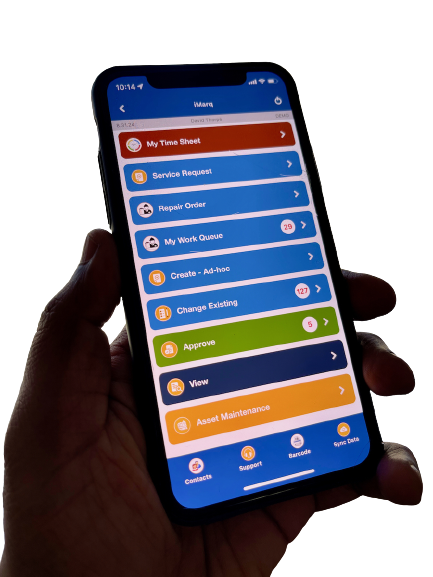The pandemic has created a large gap in the availability of qualified technicians across industries in the US. In fact, it is being seen as an epidemic in the transportation and logistics industry. The supply chain of most industries has not yet completely recovered from the effects of the pandemic. Companies are forced to cut back on services and hours of operations and this is having a rather large negative impact, particularly on Small and Medium Businesses (SMBs).
What can companies do to compensate for this gap in labour availability? How can they maintain productivity and service levels amidst the lack of skilled personnel? These questions plague even the largest of companies.
There is growing interest in adopting digitization technologies like cloud, mobile, AI, and IoT in the manufacturing, automotive, and transportation & logistics industries, among others. These technologies have been proven to have a significant impact on operational efficiency. But what does this really mean for businesses on an operational level?
A digitized solution for maintenance allows companies with distributed assets, complex maintenance procedures, and strict compliance requirements to reduce the latency and disconnect between action on the field and the back office. Ideally, it should allow crew to track their schedules and work-orders on a device of their choice. This, in turn, saves time that would be spent chasing long paper trails, constant follow-ups, and manual service requests. Digitizing the maintenance process also allows companies to find redundancies, gaps and identify the areas that require immediate attention.
So how does digitization help combat technician shortages?
Here are a few ways in which digitizing maintenance can help:
- Digitization gives managers and supervisors a bird’s eye view of the maintenance process. It helps allocate personnel more effectively
- A digital solution helps crew spend more time on their work and less on redundant tasks like data entry and paperwork. This will have a positive impact on productivity and labour efficiency.
- Crew will no longer struggle with access to data. Most solutions like iMarq, centralize the storage of data and allow crew to access them on any device, at any time.
- A good digital solution should be intuitive and easy to use. Crew will no longer struggle with archaic and slow systems.
- Ideally, good digital technology should work on any device and in offline mode, should the need arise.
Ultimately, digitization solves technician shortage by making the available manpower more efficient. It saves time and increases productivity and efficiency. It redefines the requirement for additional crew members for existing workloads.
There is data to prove the effectiveness of a digitized maintenance platform to help maintain and increase productivity despite a changing economic landscape. Technician shortages are likely not a one-off and companies are being forced to adopt solutions that help them stay competitive despite these challenges. Digitization of the maintenance process is one of the easiest solutions to help companies stay productive and competitive. A digitized maintenance solution should no longer be a nice-to-have; it is a must-have.
Businesses around the world have adopted iMarq, and it has quite literally changed the game for them. See how we solved LA Metro’s maintenance challenges across thousands of assets, hundreds of crew members, and distributed locations.





